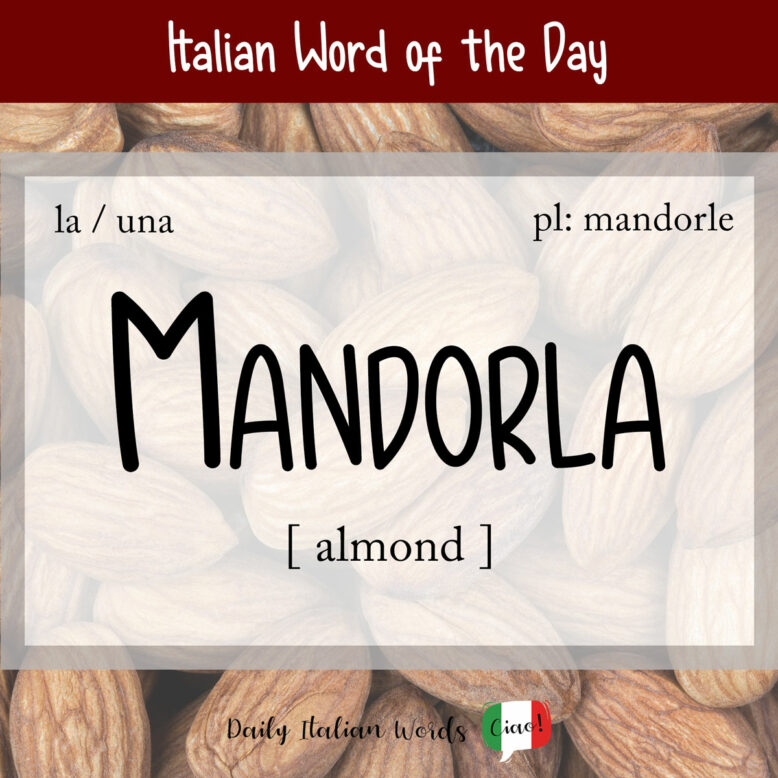The word for almond in Italian is the lovely sounding mandorla (feminine, plural: mandorle). Both words can ultimately be traced back to the medieval Latin amandula.
Mandorla shouldn’t be confused with the masculine equivalent mandorlo which is the word for the almond tree.

Learn about ‘mandorla’ with our video
To say that something is made with almonds, two expressions are possible – di mandorle or alla mandorla – but if you want to say that something tastes of almonds, regardless of whether or not it actually contains them, it is better to use the expression al sapore di mandorle.
Ho preparato dei biscotti alle mandorle e una torta soffice con ciliegie, al sapore di mandorle.
I’ve made almond cookies and a soft almond-flavoured cake with cherries.
Some popular products made out of almonds include:
- latte di mandorle = almond milk
- pasta di mandorle = almond paste
- farina di mandorle = almond flour
- olio di mandorle = almond oil
- estratto di mandorle = almond extract
- dolce di mandorle = almond pastry
- torta di mandorle = almond cake

A word used to describe both a sweet brown almond-flavoured liqueur produced in Italy, and an Italian biscuit made from almonds is amaretto (the diminutive of amaro meaning bitter). The name is an allusion to mandorle amare (bitter almonds).
Something described as being a mandorla is almond-shaped. It is frequently used to describe almond-shaped eyes (occhi a mandorla).
La modella ha gli occhi a mandorla più belli che io abbia mai visto.
The model has the most beautiful almond eyes I’ve ever seen.

Color mandorla is a shade of very pale brown.
Mandorla is also the Italian word for an almond-shaped aureola, often surrounding the figures of Jesus Christ and the Virgin Mary in traditional Christian iconography, as well as early medieval, Romanesque and Byzantine art. Unlike a halo, it encircles the entire body, not just the head.
This article is also available in video format on our YouTube channel. The audio version can be found on Podbean, Google Podcast, Apple Podcast and Spotify.
Heather Broster is a graduate with honours in linguistics from the University of Western Ontario. She is an aspiring polyglot, proficient in English and Italian, as well as Japanese, Welsh, and French to varying degrees of fluency. Originally from Toronto, Heather has resided in various countries, notably Italy for a period of six years. Her primary focus lies in the fields of language acquisition, education, and bilingual instruction.


